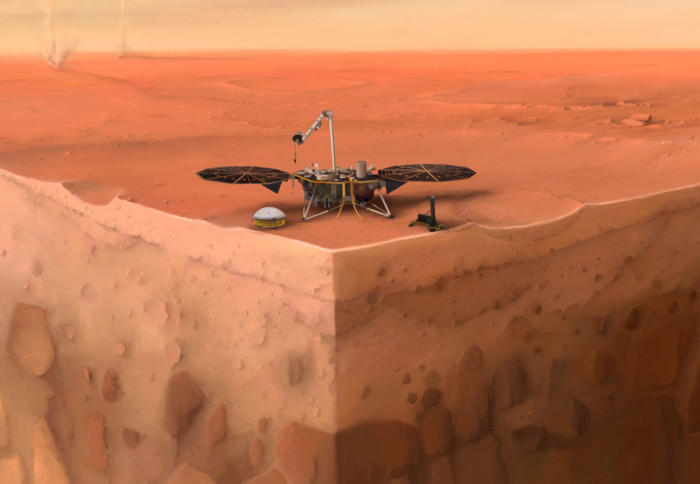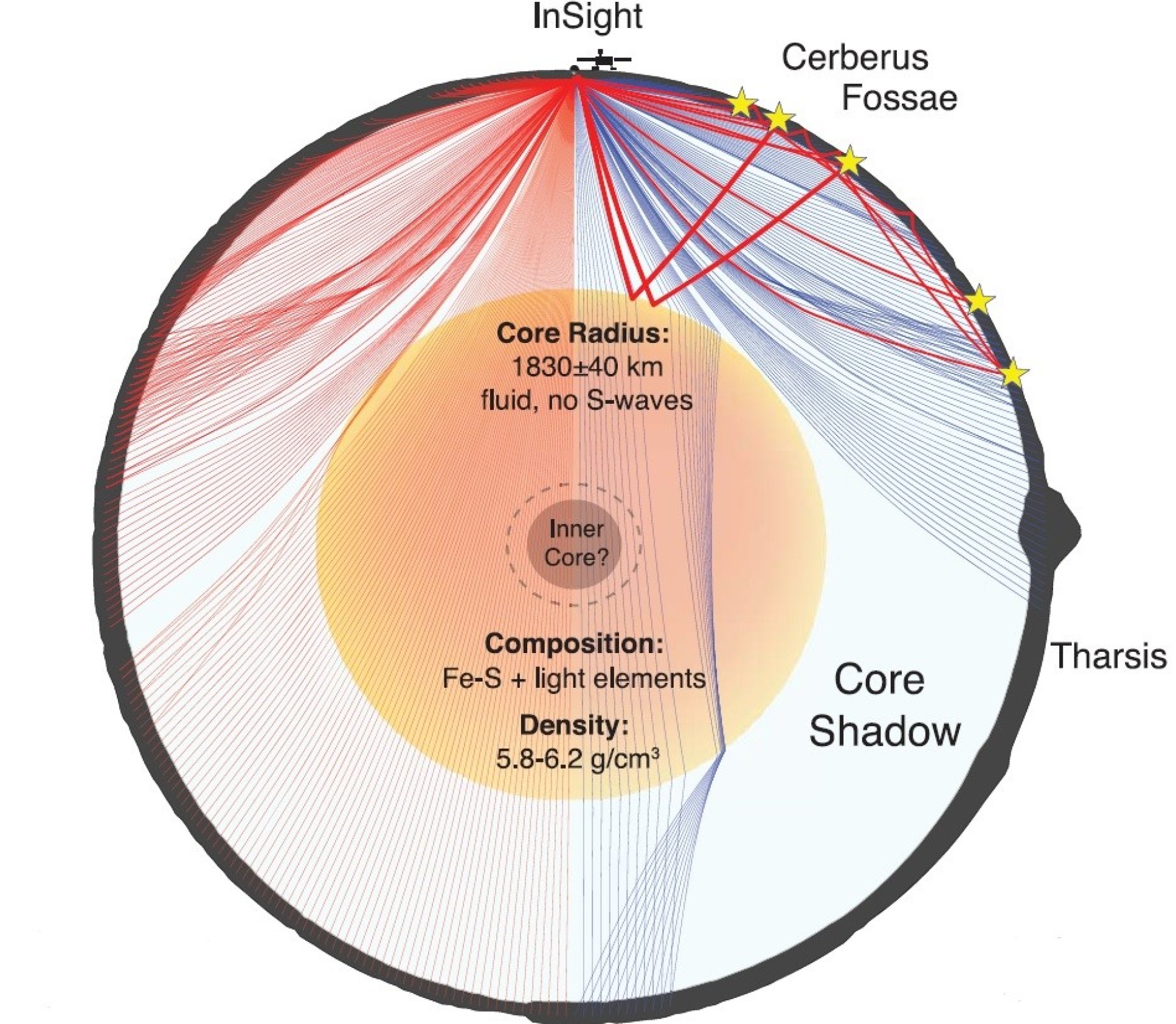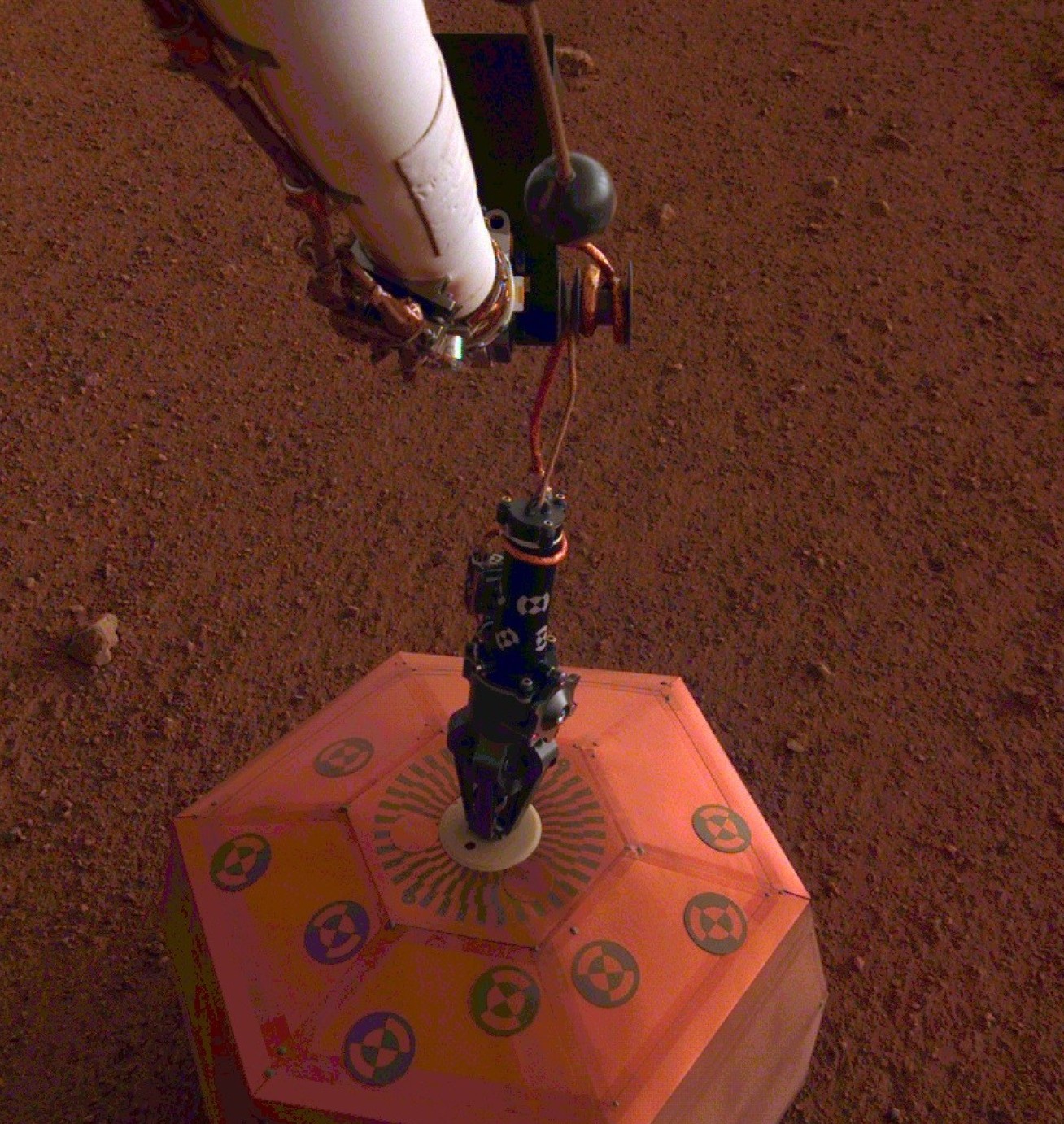InSight mission unveils the interior of Mars

The interior of Mars has for the first time been revealed using the seismometers carried on NASA's InSight mission to Mars.
In a series of articles published today in Science, researchers including from Imperial College London use the seismic measurements from the SEIS instruments aboard the InSight lander to derive the interior structure of the planet as well as giving clues to its early evolution.
As with the Apollo seismic investigation of the Moon, we expect seismologists to be examining this data for decades to come: this work represents the dawn of the new age of planetary seismology. Professor Tom Pike
On Earth, a global network of seismic sensors is used to study the interior of our planet. They measure seismic waves that travel through the layers of the planet following earthquakes, and from these signals scientists can determine the properties of those layers, including the mantle, the liquid outer core and the solid inner core.
Although only a single seismic station was used on Mars, researchers were able to the analyse the signals and untangle the seismic waves that travelled through the planet from distant marsquakes. Some waves reflected off what appears to be a rather larger core of Mars than expected, matching the relative size of the core on Earth.
This suggests the deep interior of Mars is made up of a higher proportion of lighter elements than expected. The results point to a cool, more sluggish early mantle, with more heat instead produced in the crust than had been previously estimated.
Mars was also found to be seismically much quieter than the Earth, but this might be partly down to a larger core that would ‘shadow’ half the planet from SEIS, masking the signals from potential marsquakes.

A new age
Imperial engineers supplied the silicon sensors that provide the short-period seismometers for SEIS, as well as providing analysis of the signals detected on Mars. Professor Tom Pike, from the Department of Electrical and Electronic Engineering at Imperial, is a co-author on two of the Science papers. He said: "This is our first comprehensive take on how our observations on Mars can be interpreted as revealing the deep interior of another planet.

“The instruments have had to detect the very smallest of vibrations, far below the stronger signals detected on Earth from quakes thousands of miles away. It has been extremely challenging to disentangle the seismic signal from the Mars background and without the performance of instruments exceeding our goals this work would have been impossible.
“As with the Apollo seismic investigation of the Moon, we expect seismologists to be examining this data for decades to come: this work represents the dawn of the new age of planetary seismology."
The UK contribution to the InSight mission is funded by the UK Space Agency, with Imperial College London and Oxford University supplying the short-period seismic sensors and electronics, with Bristol University also contributing alongside Imperial and Oxford to mission operations and seismic analysis.
-
‘Upper mantle structure of Mars from InSight seismic data’ by Amir Khan et al. and ‘Seismic detection of the Martian core’ by Simon C. Stähle et al. are published in Science.
Top image credit: IPGP/Nicolas Sarter
Middle image credit: Stähler et al., 2021
Bottom image credit: NASA/JPL-Caltech
Article supporters
Article text (excluding photos or graphics) © Imperial College London.
Photos and graphics subject to third party copyright used with permission or © Imperial College London.
Reporter
Hayley Dunning
Communications Division